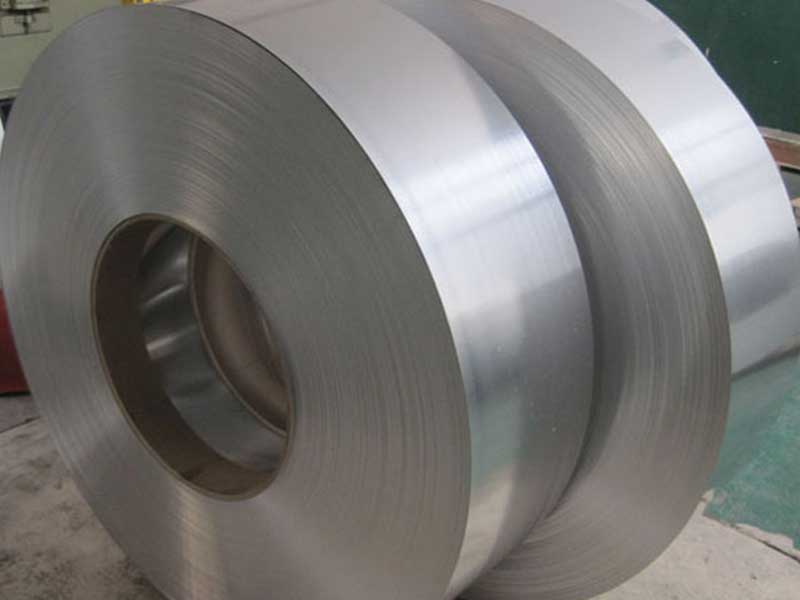Pe Coating Prepainted Aluminum Strip Coil
In the evolving landscape of construction, automotive design, and appliance manufacturing, materials that combine durability, formability, and aesthetic appeal are indispensable. PE coating prepainted aluminum strip coil stands as a testament to this antithesis, marrying the intrinsic advantages of aluminum alloys with advanced resin coatings.
PE Coating Prepainted Aluminum Strip Coil
Prepainted aluminum strip coil refers to aluminum rolled into strips, pre-treated and coated with paints before fabrication into end products. Among various coating types—polyester (PE), fluoropolymer (PVDF), and epoxy—Polyester (PE) coating holds a unique position. Rendered as a thermoset or thermoplastic resin coating, PE penetrates the surface sublimely and creates a uniform, protective, and decorative layer over the substrate.
When referring to a “PE coating prepainted aluminum strip coil,” the essential undergoes the following steps:
- Aluminum alloy selection: predominantly 1xxx to 5xxx series aluminum alloys are used owing to their balanced mechanical properties and corrosion resistance.
- Surface preparation: chemical cleaning, anodizing or chromate conversion treatment to enhance coating adhesion.
- Base coat application: includes a primer layer to improve bonding and corrosion inhibition.
- Polyester (PE) topcoat: applied via roll coating and cured at precise industrial bake times.
- Coil slit to desired widths for downstream manufacturing.
Feature Attributes of PE Coating Prepainted Aluminum Strip Coil
1. Chemical & Physical Robustness
The PE coating imparts superior resistance to exposure-related wear:
- Chemical inertness: Compatible with acids and alkalis up to specific concentrations. This is attributable to the C=C unsaturated backbone and cross-linking density in polyester molecular chains.
- Corrosion resistance: When coupled with high-grade aluminum alloys (e.g., 3003 H14 or 5005 H32), corrosion depth after testing complies with ASTM B117 Salt Spray Test for generally >1000 hours.
- UV resistance: Though less resilient compared to PVDF coatings, specialized polyester blends maintain gloss retention over extended outdoor applications.
2. Coating Thickness & Uniformity
Consistently maintained thickness typically ranges from 15 μm to 25 μm, balancing flexibility and protection. Minor thickness calibration is instrumental in:
- Avoiding flake peeling or delamination during coil bending or drawing.
- Ensuring uniformity affects gloss level and color uniformity, crucial for aesthetics in architectural use.
3. Mechanical Performance:
- Tensile strength of aluminum base alloys generally falls in the range of 145-215 MPa (depending on tempers such as H14, H18).
- Critical to the chemical bonding strength of PE coatings is surface tension and micro-roughness after pretreatment processes. Adhesion values can surpass 7 N/cm per ASTM D3359 (crosscut adhesion test).
- Bending radii down to 5 times the material thickness are achievable without observable coating cracking if process parameters are optimized.
4. Color & Gloss Varieties
The coating matrix supports a diverse color palette, facilitated by using high-stability pigments resistant to fading or chemical degradation across environmental conditions. Gloss levels typically pertain to 20 to 80 GU (Gloss Units) measured per ASTM D523, addressing demands from matte to semi-gloss finishes depending on architectural or appliance applications.
Applications From a Poly-Engineering Lens
Interpreting PE-coated aluminum strip coils merely as a material layer risks undervaluing the strategic integration of surface chemistry, mechanical usability, and systemic applications it enables.
1. Architectural Cladding
The composite systems leverage the light weight, corrosion protection, and vibrant finishes:
- Prefabricated cladding panels for external facade systems where thermal expansion compatibility with substrates is essential to mitigate cracks or debonding.
- Urban infill projects use PE coatings for resource-efficient copings, eaves, or soffits that seamlessly blend aesthetic variety with weather durability.
2. HVAC Components
High corrosion-resistant zinc-coated and PE-coated aluminum strips fashioned as unpainted inner linings and ducts exhibit chemical passivity even in acidic condensate-rich environments. PE’s flexibility in coil form facilitates metal pressing and crafting of profiles involving multiple bending.
3. Signage and Advertisement Boards
Stable adhesion coupled with consistent gloss retention expedites branding proposals embodying graphic decal overlays. Also, during fabrication:
- PE coating thickness tolerance reflects upon the intricacy of letter cutouts.
- PVC coating may be supplemented if tactility resistance is imperative.
4. Appliances and Electronics Housing
Modern household refrigerators, air conditioners, and laptops utilize PE prepainted aluminum strips wherein a hybrid coating complements minimal maintenance obligations with noticeable visual surfaces. Moreover, frame bending ensures conformity to mechanical stress distribution without emerging surface corrosion.
Technical Implementation Standards and Chemical Parameters
| Parameter | Typical Data | Standard Reference |
|---|---|---|
| Alloy Grade | 3003 H14, 3004 H32, 5005 H32 | AMS-QQ-A-250/11; ASTM B209 |
| Coating Material Type | Polyester (Thermoset/Thermoplastic) | ASTM D6601 |
| Coating Thickness | 15 - 25 μm | ASTM D1005 |
| Tensile Strength (base alloy) | 145 - 215 MPa (depends on temper) | ASTM B577 |
| Adhesion (cross cut test) | >7 N/cm | ASTM D3359 |
| Salt spray resistance | >1000 hours no base metal corrosion | ASTM B117 |
| Tensile Elongation | 10 – 25% into the alloy | ASTM B557 |
| Thermal expansion coefficient | 23 - 25 x 10^-6 /°C application specific | Specific testing |
| Gloss Level Range | 20 - 80 GU (Magazine to Semi-gloss) | ASTM D523 |
| UV Resistance | Suitable for ≥ 5 years outdoor exposure | ISO 2810 |
https://www.alusheets.com/a/pe-coating-prepainted-aluminum-strip-coil.html




